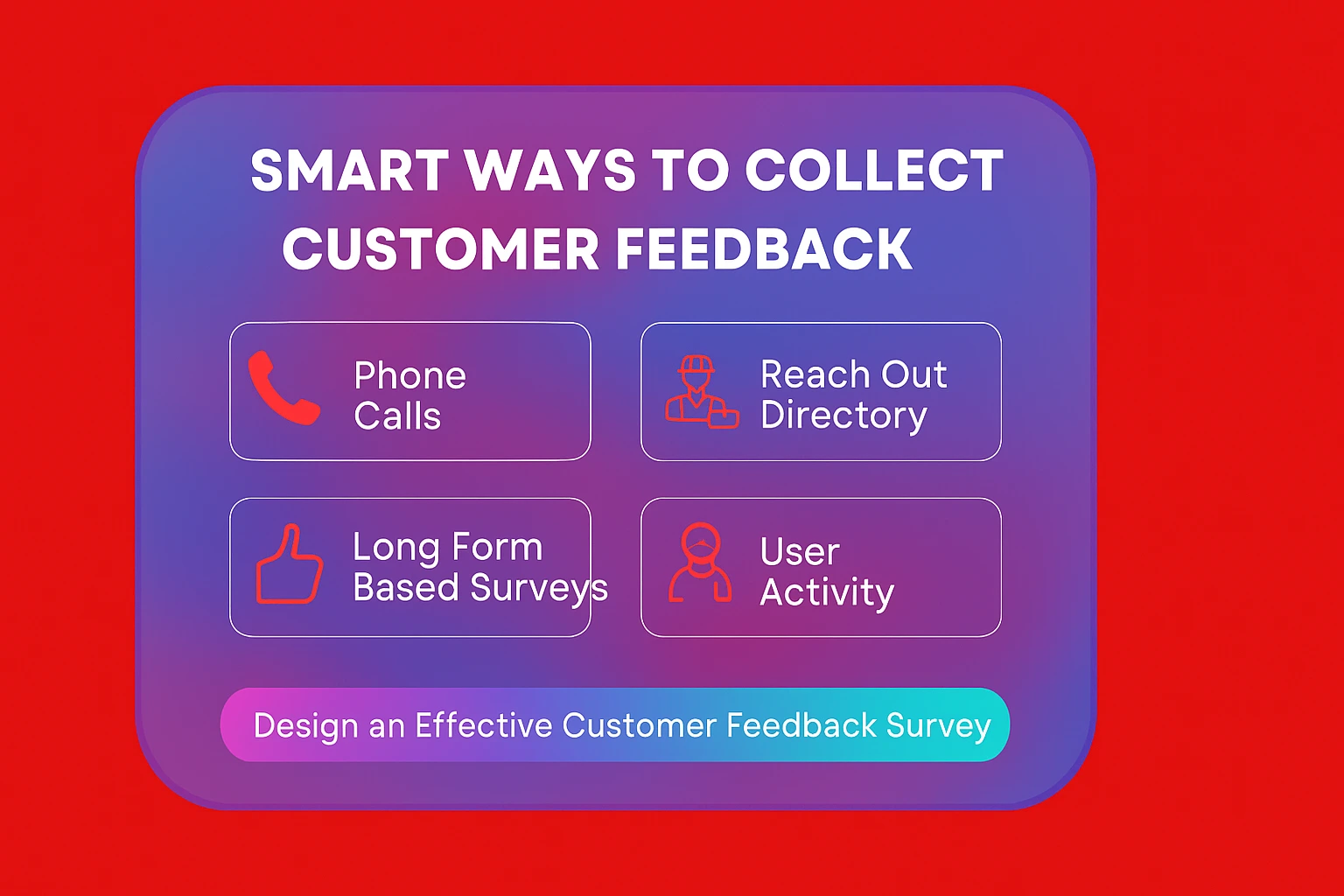Customer feedback surveys are one of the most effective ways to understand your customers’ needs and improve your business. But designing a survey that actually gets responses requires more than just asking a few questions. In this article, we’ll break down how to design an effective customer feedback survey that not only gets completed but also provides actionable insights.
Why Your Survey Design Matters
A poorly designed survey can lead to low response rates, inaccurate data, and even frustration from your customers. On the other hand, an effective survey design ensures that:
-
You’re asking clear, actionable questions.
-
Your survey is short and easy to complete.
-
Your questions align with your business goals.
In this article, we’ll go over how to create a survey that engages customers, yields high-quality responses, and ultimately helps you grow your business.
Customer Feedback Best Practices
1. Define Your Survey Objective
Before you start designing your survey, it’s essential to know why you’re gathering feedback in the first place. Each survey should have a clear purpose that will drive the questions you ask and how you analyze the results.
Ask yourself:
-
Are you gathering feedback on your customer service?
-
Are you measuring product satisfaction or feature requests?
-
Do you want to understand brand perception?

Once you have a clear objective, you can create questions that focus on gathering specific insights related to your goal.
Action Tip:
If you want more insights on why customer feedback matters, check out our pillar post: Customer Feedback Surveys: The Ultimate Guide for SMBs (2025).
2. Keep Your Questions Clear and Concise
Customers don’t have time to answer long, complicated questions. The best surveys are short, clear, and focused. Avoid jargon, and make sure your questions are simple and straightforward. Aim for questions that can be answered in under 10 seconds.
Use closed-ended questions for easy analysis (e.g., yes/no, multiple choice), and only use open-ended questions when necessary for in-depth feedback.
Examples of Effective Questions:
-
Closed-ended: “On a scale of 1-5, how satisfied are you with our product?”
-
Open-ended: “What could we do to improve your experience with our product?”

3. Choose the Right Question Types
The type of question you use will depend on what kind of data you need. Here are the most common question types for customer feedback surveys:
-
Likert Scale: A scale where respondents choose from a range of answers (e.g., strongly agree to strongly disagree).
-
Multiple Choice: Allows respondents to choose from a set of predefined options.
-
Net Promoter Score (NPS): Measures the likelihood of a customer recommending your business to others on a scale from 0 to 10.
-
Rating Scale: Respondents rate something (e.g., 1 to 5 stars).
-
Open-ended: Allows respondents to provide a detailed response in their own words.
Action Tip:
Be careful with NPS surveys. To learn more about the NPS methodology, explore our pillar post Customer Feedback Surveys: The Ultimate Guide for SMBs (2025).
4. Limit the Number of Questions
Long surveys overwhelm respondents and often lead to higher drop-off rates. Aim for 5–8 questions in your survey, and make sure they’re relevant to your objective.
You want to gather as much actionable feedback as possible while respecting your customers’ time. Consider breaking your survey into sections if you need more questions. This way, customers won’t feel like they’re filling out a daunting form.
Pro Tip:
If you’re running a post-purchase survey, consider focusing on just one question about overall satisfaction and a few follow-up questions that ask for specifics.
5. Provide Clear Instructions and a Time Estimate
People are more likely to complete your survey if they know how long it will take and what to expect. Always include a note at the start of your survey that lets respondents know:
-
How long the survey will take (e.g., “This survey will take 2–3 minutes”).
-
The purpose of the survey (e.g., “We want to improve our customer service”).
This sets the right expectations and reduces survey fatigue.
6. Test Your Survey
Before sending your survey out to your entire customer base, test it. Ask a few colleagues or beta users to take the survey and provide feedback. Look for:
-
Any confusing or unclear questions.
-
Long load times.
-
Errors in the survey logic.
Action Tip:
Test on multiple devices to ensure the survey is mobile-friendly. More than half of all responses come from mobile devices.
7. Timing Is Key
Sending your survey at the right time makes a huge difference. The best time to send a survey depends on your objective:
-
Post-purchase surveys should be sent shortly after the transaction.
-
Customer service surveys should be sent immediately after an interaction.
-
Long-term feedback can be sent quarterly or annually to measure satisfaction and gather insights for improvements.
Use an automated system to ensure your surveys are sent at optimal times for each customer.
8. Keep It Engaging and Friendly
Your survey should be inviting and friendly. Use a conversational tone and make sure the design reflects your brand’s personality. Customers are more likely to respond if the survey feels approachable.
Consider offering a small incentive for completing the survey (e.g., discount codes, entry into a giveaway) to increase participation.
9. Analyze the Results
Once you’ve gathered feedback, it’s time to analyze the results. Here’s how to do it effectively:
-
Look for trends: Are there any common pain points mentioned in the open-ended responses?
-
Quantify feedback: Use NPS scores, ratings, and multiple-choice answers to track overall satisfaction.
-
Identify areas of improvement: Based on the feedback, identify key areas where you can improve your product, service, or processes.
The Importance of Feedback for SMB Growth
Conclusion: Start Designing Your Feedback Survey Today
Designing an effective customer feedback survey doesn’t have to be complicated. By focusing on clear, actionable questions and a smooth user experience, you’ll get the insights you need to make impactful business decisions.
To dive deeper into how feedback surveys can enhance your SMB’s growth, check out our full guide on Customer Feedback Surveys 2025.
